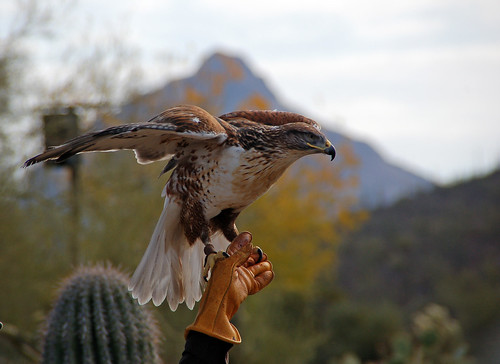
I heard about harris hawks before moving to the Southwest. They're one of only two species of raptor that hunt in packs. They form groups of two to seven hawks. The group surrounds the prey, one flushes it out and the others move in for the kill. Five birds is optimal group size.

Then one landed in the back yard while I was hanging laundry. A pair of hawks ambushed some pigeons in the alley. They didn't get any pigeons, but the bird pictured below hung out on the fence between our back yard and our neighbor's garage. I was only a few yards away. (S)he just watched me go about my business and appeared content and unafraid, so ran inside, grabbed the camera, and took a few shots.

Last Tuesday we visited the Arizona-Sonora Desert Museum and they had a raptor free-flight presentation that featured a raven, a harris hawk, and a great horned owl. I took the first picture and the one below at that presentation. Of course, owl photos are forthcoming.

So though I didn't find harris hawks in their natural environment - out in the desert, stalking prey from atop saguaros - I have seen more of these amazing birds that I expected. They're very adaptable to man-made environments and good bird for falconry.
Read more on harris hawks at the Arizona-Sonora Desert Museum website or at All About Birds from the Cornell Lab of Ornithology.

No comments:
Post a Comment